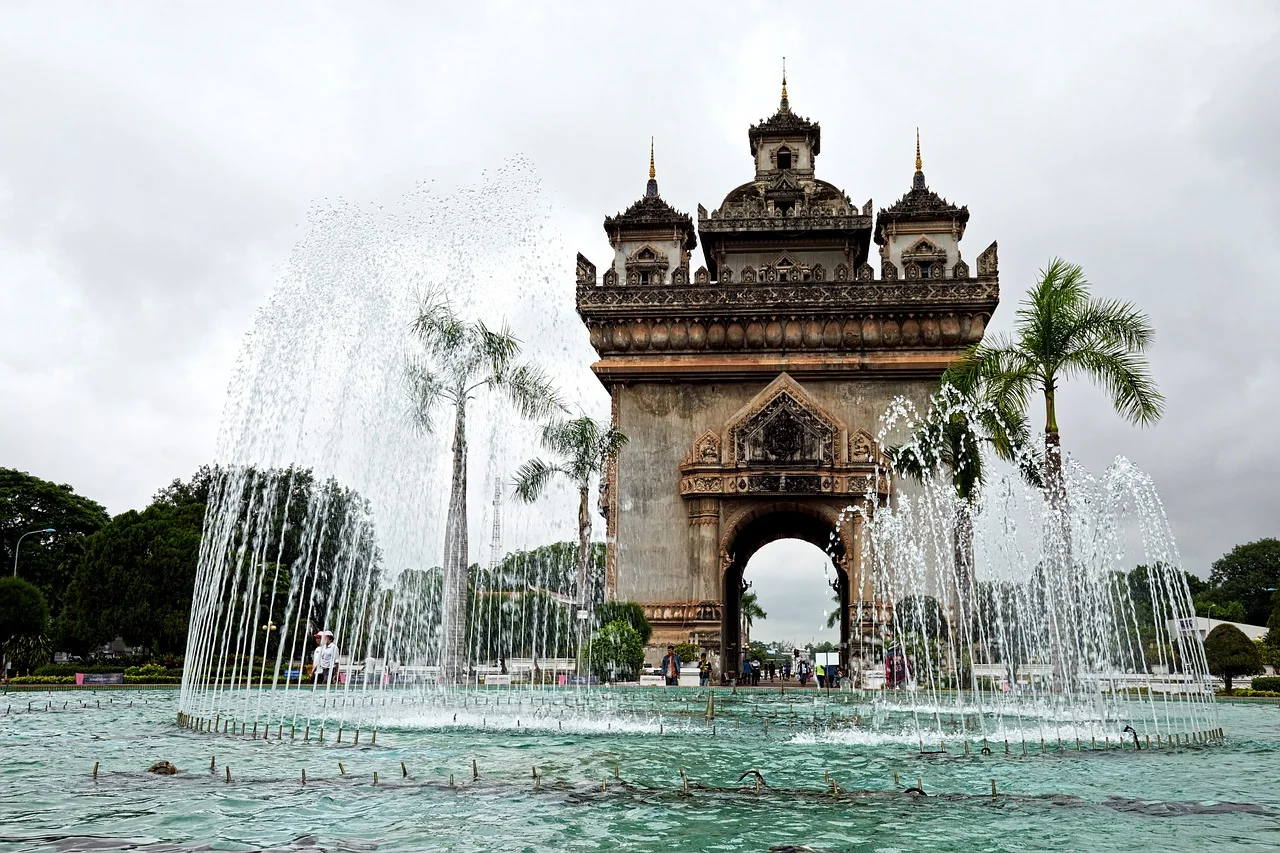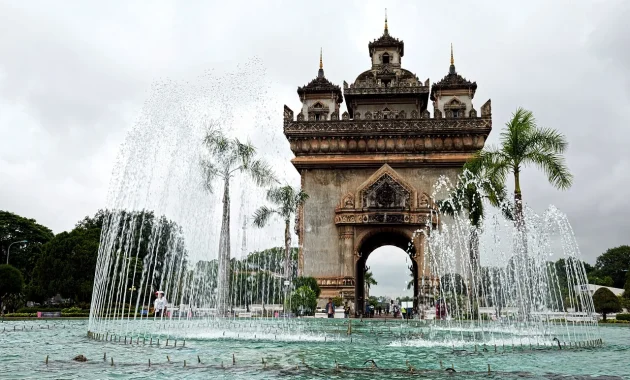
In the heart of Vientiane, the capital of Laos, stands an architectural wonder that embodies both national pride and historical significance. Patuxai, often referred to as the “Victory Gate” or “Triumphal Arch”, is a monument unlike any other in Southeast Asia. With its unique blend of Laotian cultural elements and French colonial influences, Patuxai has become a symbol of resilience and hope for the Laotian people. This stunning landmark invites travelers from all over the world to explore its intricate design, historical roots, and breathtaking views.
The History Behind Patuxai: A Monument of National Pride

Patuxai’s origin is steeped in the history of post-colonial Laos. Built between 1957 and 1968, this majestic structure was erected to honor the Laotian soldiers who fought for the country’s independence from France. The name “Patuxai” translates to “Gate of Triumph,” a nod to its inspiration from the Arc de Triomphe in Paris. However, unlike its French counterpart, Patuxai incorporates Laotian design elements, making it a true reflection of the nation’s culture and heritage.
Though originally intended as a symbol of victory over colonialism, the monument also represents the struggles and aspirations of the Laotian people during the mid-20th century. The construction of Patuxai was funded partly by American war reparations during the Vietnam War, a fact that adds a layer of complexity to its legacy. Ironically, some locals refer to the structure as the “Vertical Runway”, a reference to the fact that cement donated for the construction of an airport was instead used to build the monument.
Architectural Marvel: The Laotian-French Fusion
The architecture of Patuxai is a fascinating fusion of French and Laotian styles. The base of the structure is reminiscent of the Arc de Triomphe, but the upper portions are unmistakably Laotian. Intricate carvings of mythical creatures such as the Kinnari, a half-woman, half-bird figure from Buddhist mythology, adorn the monument. These details emphasize Laos’ deep-rooted Buddhist beliefs and the influence of traditional Laotian art forms.
At the same time, the monument’s imposing height and broad arches are borrowed from French classical architecture. The blend of these two vastly different styles creates a visual masterpiece that is both foreign and familiar, a juxtaposition that tells the story of Laos’ historical crossroads between East and West.
The Four Arches: Symbolism and Spirituality
Patuxai features four grand arches, each of which holds symbolic significance. The four entrances to the monument are said to represent the four cardinal virtues in Buddhism: kindness, sympathy, flexibility, and equanimity. Each arch invites visitors to pass through, as if symbolically entering a realm where these virtues are paramount. In addition, the towering structure is crowned with five ornate towers, which represent the five principles of coexistence among nations and reflect Laos’ hopes for peace and unity on the global stage.
Climbing to the Top: The Best View in Vientiane
One of the most enticing aspects of visiting Patuxai is the opportunity to climb to the top. The monument offers seven floors for visitors to explore, including exhibition halls and a souvenir shop. However, the highlight of any visit is the panoramic view from the top level. From this vantage point, tourists can enjoy a stunning 360-degree view of Vientiane, including the majestic Mekong River and the lush, green landscapes that surround the capital city.
The climb itself is relatively easy, with stairs winding through the inner chambers of the monument. Each level offers its own points of interest, from the history-laden plaques and displays on the first few floors to the breezy open terraces near the top. Once at the summit, visitors are rewarded with unparalleled views of the city, making Patuxai one of the best locations for sightseeing and photography in Laos.
Patuxai Park: A Serene Escape
At the base of the monument, visitors can wander through the peaceful Patuxai Park, a beautifully landscaped area that offers a stark contrast to the bustling streets of Vientiane. The park is home to fountains, gardens, and benches, making it an ideal place for relaxation. At night, the monument is illuminated, and the nearby fountains are lit up, creating a magical atmosphere. Patuxai Park is a favorite spot for both locals and tourists to enjoy a leisurely stroll, have a picnic, or simply sit and admire the grandeur of the monument.
Patuxai as a Symbol of Modern Laos
In recent years, Patuxai has come to represent not only Laos’ tumultuous past but also its modern aspirations. The country is growing in both political and economic stature, and Patuxai stands as a reminder of how far it has come. With its towering spires reaching toward the sky, the monument is a beacon of hope, symbolizing the determination of the Laotian people to build a better future. It remains a powerful symbol of national unity, cultural identity, and resilience.
Visiting Patuxai: Practical Information
Patuxai is located on Lane Xang Avenue, one of the main roads in Vientiane, making it easily accessible by foot or by vehicle. The monument is open daily, and admission fees are nominal, making it a budget-friendly attraction for tourists. For those who wish to visit the monument at its most serene, early mornings or late afternoons are recommended, as the crowds tend to be smaller during these times.
Moreover, the evenings offer an added treat, as the lighting of Patuxai transforms the structure into a glowing landmark. The fountain shows in Patuxai Park also provide a relaxing way to end the day, as the sounds of trickling water and soft lights set the tone for a peaceful evening.
Final Thoughts on Patuxai: A Must-Visit Landmark in Laos
Patuxai is not just a monument; it is a living testament to Laos’ past, present, and future. With its intricate designs, symbolic significance, and panoramic views, it remains one of the most iconic landmarks in the country. Whether you are a history buff, an architecture enthusiast, or simply a traveler looking to soak in the local culture, a visit to Patuxaishould be at the top of your itinerary when in Vientiane.